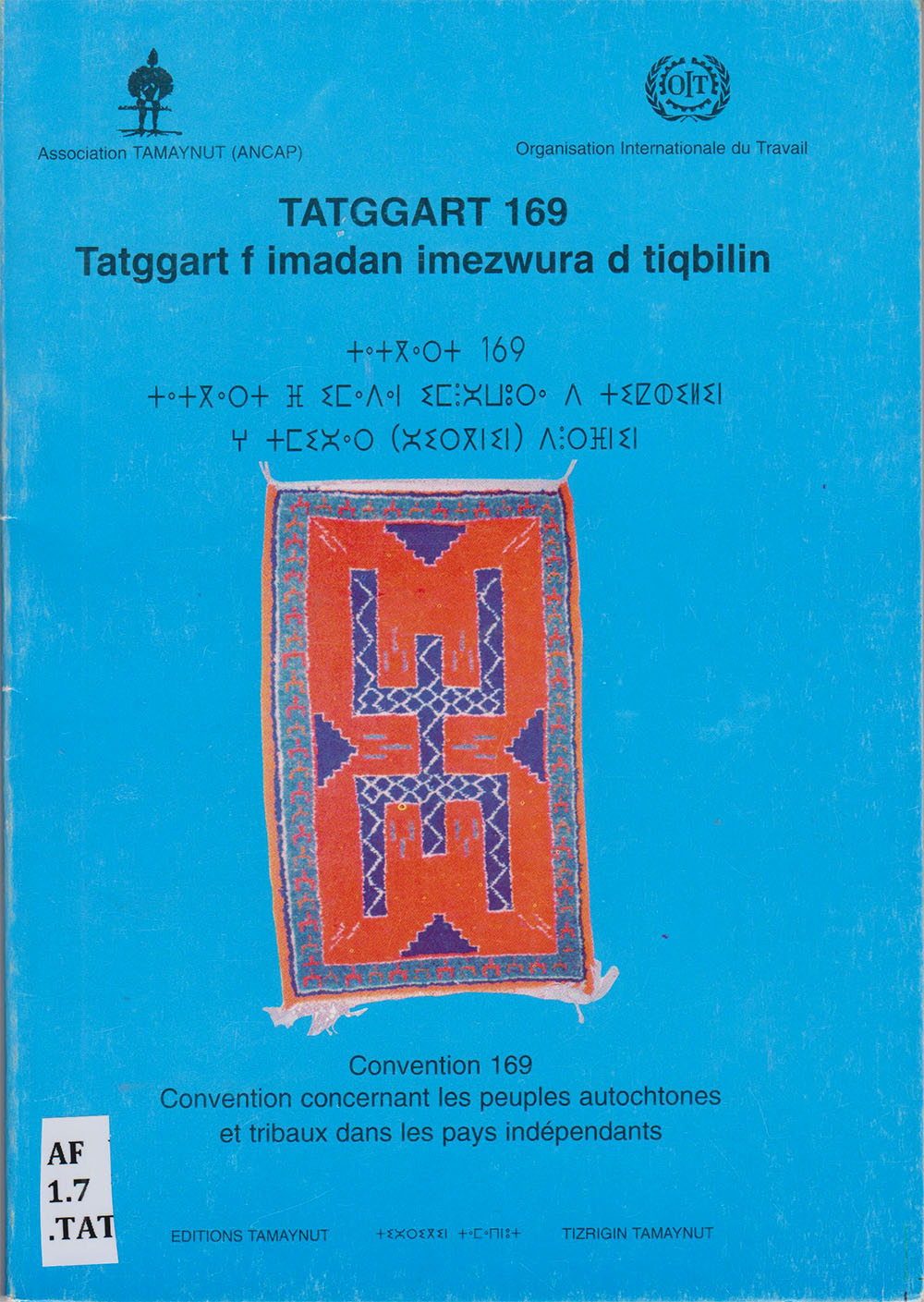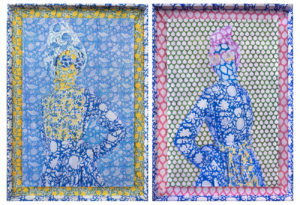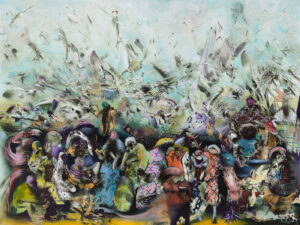Translation must find the truest rendering and in this original essay on the translation of Amazigh languages, the writer argues that to translate is to revitalize, giving indigenous cultures a larger place at the table.
Brahim El Guabli
Tradurre é tradire: translation is betrayal. Thus goes the saying that generations of translators and scholars of translation have grappled and are still grappling with. Translation is betrayal, but I have always wondered who and which language translation betrays. Are all translations treasonous? Does not this blanket statement about translation’s traitorous nature camouflage other treasons? That is, the treason of idioms that have not secured their place in the league of dominant languages. Stating that untranslatables between equally hegemonic languages lead to treason overshadows a more treasonous act committed against Indigenous languages, which lack the material resources they need to grow and expand.
Instead of tradurre é tradire, I say that, in the Indigenous context, to translate is to revitalize. Between revitalization and treason there is a fine line that I argue is crucial for the Indigenous languages to sustain themselves and broaden their capacity to say what they are thought to be unable to convey. Because translation studies has mainly centered on languages that have a higher market value in the global language stock exchange, Indigenous languages have barely been invited into any conversation about translation and indigeneity. After all, the main theories of translation (from those of Friedrich Hölderlin to those of Jacques Derrida, for example) are based on European languages. Consequently, the betrayal committed by translation from and into Indigenous languages is not merely necessary but crucial for the language to self-generate, self-enliven, and convey its speakers’ worldview to others, and to do so in their own tongue.
Indigeneity elicits both excitement and resistance. The term went from being used to describe colonized people from the point of view of their colonizers to acquiring a powerful ability to reenergize forms of thought and existence that were once disregarded or doomed to extinction in their encounter with colonialism. The rehabilitation of Indigenous people since Vienna’s World Conference on Human Rights in 1993 has endowed the concept with greater legitimacy and allowed its deployment to address issues as varied as land ownership, equitable distribution of resources, local practices of governance, Indigenous institutions, and advocacy for forms of sovereignty that were not possible in the past. With all the emotions it stirs, Indigeneity, as Marisol de la Cadena and Orin Starn have eloquently written, is “a relational field of governance, subjectivities, and knowledges that involves us all — indigenous and nonindigenous — in the making and remaking of its structures of power and imagination.”

In Tamazgha, the Amazigh homeland, which extends from the Canary Islands to the island of Siwa in Egypt and encompasses parts of sub-Saharan Africa, articulations of Amazigh indigeneity have been diverse, depending on the political and cultural context. That said, the participation of Amazigh activists in the aforementioned Vienna conference of 1993 and the establishment of the Amazigh World Congress in 1994 have contributed to the assimilation of the concept of indigeneity into the Tamazghan context. Tamazight, the Amazigh language, already has distinguished between amṣlī (the indigenous) and the aberrānī or imzzi (the stranger/outsider), but these terms lacked the conceptual force and theoretical complexity that their encounter with the idea of global indigeneity would give them. Thanks to this encounter, today’s Imazighen — the plural of Amazigh— are aware that they are the Indigenous people of Tamazgha and that their language, identity, culture, and resources have been subjected to domination since the Arab invasion in the eighth century. As a result of this awareness, Imazighen have managed to dissociate Arabism from Islam and reconciled their Islam with their mission to preserve and recover the Amazigh linguistic and cultural identity of their ancestral homeland.
Tradurre é tradire in the Amazigh context has taken its fullest form in the translation of the Quran into Tamazight. If we were to talk about a minefield in translation, it would be the translation of sacred texts. In this context, the translator is a human attempting to capture both the meaning and the inimitable language of the divine in an intelligible human idiom.
Translation has been central in this effort to assert Amazigh indigeneity and shake off domination. I use translation here in a loose sense that does not necessarily mean transference of meaning from one language to another but rather how the idea of indigeneity itself became significant for Imazighen’s struggle for recognition. In an interview, Hassan Id Belkassam, the pioneering Amazigh activist and litterateur, explained to me how the global concept of indigeneity came to be in Tamazight. When he and lawyer Ahmed Dgherni, a fellow Moroccan, attended the Vienna conference in 1993, they had brought a document in which they specified that Imazighen were “the first inhabitants of North Africa.” During committee work, they were faced with a choice between the subcommittee on Indigenous people and the subcommittee on minorities. They immediately understood the stakes of Indigeneity as being far greater than those of minorities, and realized that their ordinary sentence al-amāzīgh yu‘tabarūn al-sākina al-aṣliyya li-shamāl ifriqiā could be translated as the “the Imazighen are considered the indigenous people of North Africa.” Since 1993, this translation has led to a deep conceptual transformation in the way Tamazight has been talked about. Id Balkassam himself has contributed to transnational Indigenous activism by serving as founding chair of The Indigenous Peoples of Africa Coordinating Committee (IPAC), which has over a hundred African Indigenous peoples’ organizations. Adopting the concept of indigeneity shifted the tools of Amazigh activism and confirmed the legitimacy of its advocacy for the Amazigh people’s rights within a broader international indigeneity movement.
As a result of the circulation of the concept in the media, the Amazigh cultural movement was accused of treason and of preparing the terrain for discord between the components of a supposedly cohesive Moroccan nation. This accusation of treason was not directed at translation per se, but rather at the ramifications of the Amazighization of the concept of aṣlāniyya (indigeneity/autochthonousness). There is no stronger Copernican revolution than the one that allows a people to self-define and articulate its existence in its own language, and this first act of translation gave Amazigh activists who attended the conference a clear idea that their struggle belongs to a larger body of dispossessed, Indigenous people. Translation here lived up to its treasonous nature because it indeed betrayed the continuity of linguistic and cultural subjection of Imazighen to linguistic and intellectual regimes that dominated their ancestral homeland.
Tradurre é tradire in the Amazigh context has taken its fullest form in the translation of the Quran into Tamazight. If we were to talk about a minefield in translation, it would be the translation of sacred texts. In this context, the translator is a human attempting to capture both the meaning and the inimitable language of the divine in an intelligible human idiom. Although daunting, the task has not stopped translators from translating the Arabic-language Quran, which we Muslims believe to be the word of God, into French, English, German, and Persian, among other languages. Interestingly, however, the tradition of translating the Quran did not extend to Tamazight for a long time. It was as if the Quran were translatable to all languages except for Tamazight or as if Tamazight were a “leftover language,” an idiom that the divine created as an afterthought from leftovers of other languages. Admittedly, historical translations of the Quran into Tamazight have been mentioned in different sources, but none of them has been found to date.
Amazigh historian and poet Ali Sadqi Azaykou drew attention to the imbrication of Arabization, Islamization, and the continued marginalization of Tamazight in the 1980s, and in the process attempted to dissociate Arabic from Islam and rehabilitate Tamazight. Azaykou called for a distinction between “Moroccans being Muslim and the truth of the Arab invasion as a historical movement” that brought a different worldview and way of life to North Africa. Doubling down on his argument, Azaykou asserted that the Quran can speak all languages; otherwise, God would have created a new idiom within the existing Arabic language to reveal the Quran. This new idiom would have been the universal Quran-only Arabic. However, such language does not exist because the Quran is translatable into all idioms. Thus, Azaykou laid the foundation for modern-day translations of the Quran into Tamazight in both Morocco and Algeria. Writing against the background of academic disregard of the publication of Jouhadi El Houssaine’s Tamazight translation of the Quran in 2003, linguist and cultural historian Mohammed El Medlaoui stated that “the publication is indeed a socio-cultural moment that has heavy historical significance in the space of Moroccan culture.” However, what perplexed El Medlaoui was the fact the translation did not elicit the anticipated interest from specialists in the fields of translation and Quranic studies.
The tajāhul (disregard) reserved for the Tamazight translation of the Quran is another manifestation of translation’s upending of the power dynamic. For a long time, Imazighen had to submit to a package that contained both Arabic and Islam because centuries of exegeses, discourse, and theology blurred the line between the sacred text and the language in which it was revealed. When the Amazigh translator renders the Arabic of the original text into Tamazight, he does not betray the divine message, which it is, as we have seen, theoretically possible to convey in all languages; the translator betrays Arabic by demonstrating that Tamazight is equally capable of conveying the message of God to Imazighen. More importantly, he undermines the power proponents of Arabization have assigned to Arabic at the expense of Tamazight. Treason in this Indigenous context is neither the inability to translate the untranslatable nor the failure to elevate the human idiom of the Indigenous language to the level of profundity required by divine speech, but rather the very act of making the Indigenous tongue speak the divine. Translation betrays not the divine but the dominant language that acquired its symbolic capital and hegemonic status through its monopoly of religious scripture. Translation and Indigeneity coalesce here to counter Arabization by placing the focus on the holy book and its reception by Imazighen in their own language. No one should underestimate the revitalizing impact of using one’s Indigenous mother tongue for worship.
In 2003, when Tamazight was first taught in Moroccan schools, the language had not been written or taught for 50 years, leaving a lot to be desired in terms of standardization and vocabulary.
The circulation of concepts is another way translation undergirds indigeneity. A common challenge faced by Indigenous languages is their being threatened, marginalized, and disempowered. Throughout the world, Indigenous languages live in a situation of enforced insularity that is the source of their preservation as well as their fragility. While this does not apply to all Indigenous languages, we can say that marginalization is the dominant languages’ first weapon against minoritized languages. In Tamazgha, urbanization and colonization Arabized or Gallicized sections of Imazighen during the colonial period, and Arabization policies in the post-independence era dislodged Tamazight as a mother tongue for many. In this repressive context, in which disengagement from Tamazight was the norm, translation worked as a conveyor of theory that sensitized Imazighen to the need to revitalize their language as a primary carrier of their identity. Awareness of the dangers of assimilation and cultural dissolution into the dominant language and culture allowed the leaders of Amazigh activism to draw on Indigenous projects in North and South America as well as in the Basque Country to learn cultural and linguistic preservation and revitalization strategies. Shared disempowerment became an opportunity for transference of ideas and initiatives that broadened the scope and extended the horizons of Amazigh indigeneity. In concrete terms, Tamaynut, the Amazigh organization that is best invested in indigeneity both locally and globally, translated into Tamazight “Convention 169” also known as The Indigenous and Tribal Peoples Convention. From discussions of customary law to sovereignty over land and natural resources, Imazighen translated concepts and transposed ideas from contexts that had commonalities with their own situation.
As an act of transposing meaning from one language to another, translation leavens the Indigenous language. In his book Kitābāt fī al-tarjama (Writings on Translation), philosopher Abdeslam Benabdelali argues that translation is “an opportunity offered to another writing, to another language, and to another recipient.” Accordingly, translation is not just a mechanical operation in which communication between two languages is ensured. It is an act of leavening that does its work on the receiving language, on the translated language, and on the reader of the translated work. As such, nobody or nothing touched by translation remains the same. Benabdelali does not include the Indigenous dimension of translation in his fresh readings of translation theory, but his insights evoke the revitalizing potential translation has for Indigenous languages. Mohammed Chafik — a prominent leader of Amazigh cultural production —has reflected the cultural and identarian dimensions of this potential, writing that “without translation, culture cannot but close upon itself and petrify, sooner or later, because language is a living organic system, and any living structure that ceases exchanging with its environments is doomed.” Although Chafik does not specifically address how translation revitalizes an indigenous language, the idea underlining his argument in the Amazigh context foregrounds translation as an opportunity for Tamazight to transcend its enforced insularity. By this I mean that translation allows Tamazight to enter into dialogue with its neighbors (mainly Arabic-speakers) first, and distant peoples subsequently.
To be sure, the Amazigh translator cannot but become aware of the position of deficit from which he starts his translation. In 2003, when Tamazight was first taught in Moroccan schools, the language had not been written or taught for 50 years, leaving a lot to be desired in terms of standardization and vocabulary. Obviously, this situation is both a challenge and an opportunity. It is a challenge because the Amazigh translator has the double and time-consuming task of translating and standardizing a language that remained oral for a very long time. As far as the opportunity is concerned, translation into Tamazight is an occasion to make the foreign language work within Tamazight to broaden its ability to say what it has not been allowed to say. In this regard, translation helps the Indigenous language to speak and prove its intrinsic ability to say that which it had been barred from saying during the post-independence period in Tamazgha.
Amazigh translators have undertaken the translation of Euro-American literary works to expand and enrich Tamazight in the last 20 years. Novelist, essayist, and literary critic Mohamed Usus writes in his 2023 monograph Fī riḥāb al-ungāl (“In the Vast Expanse of the Novel”) that translation of foreign literary works is inscribed within the “activist and literary horizon linked to the challenge to assert Tamazight’s ability to stay abreast of its time and transfer world literature into the Amazigh language.” Translation, in Usus’s opinion, also aims to “integrate Tamazight into modernity and enable it to possess the founding elements of the world’s historical, cultural, and ethical heritage.”
While a thorough study is needed to fully understand the mechanics and outcomes of translations of Euro-American literature into Tamazight, one can certainly imagine that such works have posed countless challenges to Amazigh translators. However, within the challenges lie countless opportunities to expand Tamazight beyond its traditional confines, open up its structures to new grammars, and infuse new discursive and aesthetic horizons into its speakers’ worldview. When a language receives the masterpieces of other nations, it is not only the language itself that is pushed into new realms but also the readers’ imagination.
Beyond the acts of “translating-out” (tarjama ilā) and “translating-from” (tarjama min) that take place throughout the process of translation, an Indigeneity-conscious translation is also a window onto an Indigenous people’s worldview. The academic output of Amazigh Studies in English has a robust and ever-increasing corpus of scholarly works. The scholarship that constitutes this corpus grapples with the main questions and dilemmas that face Imazighen both in their homeland of Tamazgha and in the diaspora. The reader who relies on this secondary literature can certainly gain solid, critical knowledge of Amazigh societies. However, what the reader cannot find in secondary sources is the Amazigh voice, the Amazigh worldview, and the Amazigh rationalization of the world in Imazighen’s own words. In this sense, translation can support Imazighen to be their own voice in the world. Access to direct translations from the Indigenous language would allow the reader to interpret the source-text and engage with its subtleties even if the original text in Tamazight is inaccessible. A simple example would be to notice how the Anglophone reader reacts to Imazighen’s location of love within the liver instead of the heart. Direct engagement with the Tamazight text translated into a foreign language would also allow the reader to gain insights into cultural values and social norms that made it Amazigh in the first place.

Intercultural borrowing of symbols is another space where translation meets indigeneity. Educated Amazigh youth have always stayed abreast of the changing cultural and musical scene around them. In the 1970s, they borrowed Indian musical tones and incorporated them into the musical style of Tazanzart, which has since become a defining element of modern Amazigh music in Morocco. Translation here works as a process of reinventing the self — specifically the traditional musical genre of rwāys, or a musical band usually led by a man or woman who most often both plays an Amazigh ribāb (a three-stringed instrument) and sings— through borrowing from and dialogue with foreign musical traditions. At a point when many Amazigh youth were distancing themselves from rwāys, Tazanzart infused new life into it and brought the younger generations back into the fold. This was not without a backlash from the guardians of tradition, who accused the borrowers of perverting the original music. Recently, this process of translation has taken the form of a reinvention of the tradition of bīylmāwn (the one who is dressed in animal hides), whose history and theatrical significance were thoroughly examined by anthropologist Abdellah Hammoudi in his classic book The Victim and Its Masks. Bīylmāwn happens immediately after Eid al-Adha, and it is a moment in which Imazighen transgress hierarchies and do away with the social order for the duration of the celebration. Hammoudi presciently captured the aspirational and future-oriented transformations embedded in the practice of bīylmawn. However, the past two years have witnessed a renewed controversy around the modernization of bīylmāwn. Younger Imazighen have queered, feminized, and “globalized” a celebration that others wanted to remain immutable. Men wearing makeup and displaying androgynous identities have confounded the proponents of binaries.
Amazigh youth in Morocco have drawn on their consumption of American cinema to “avatarize” their Indigenous tradition, pushing the boundaries of both interpretation and translation further than what is comfortable for both Islamists and change-refusing Imazighen. As the controversies surrounding bīylmāwn unfold, it is important to recognize the fecundity of intersections of translation and indigeneity, which establish new norms and practices. Here, translation’s betrayal expresses itself in the challenge it poses to established tradition, which oftentimes means routinized, change-rejecting conservatism.
The situation of Tamazight reveals that translation and indigeneity intersect and coalesce in ways that are beneficial to indigenous languages. As I have shown throughout this essay, translation provides conceptual tools and linguistic terms that may not be initially available for Indigenous people to talk about themselves. Imazighen were “the first inhabitants of North Africa” before 1993, of course, but translation allowed them to gain awareness of the significance of this phrase for their Indigeneity and to enter into transnational activism that broadened the dimensions of their advocacy. Translation also works as a powerful tool to undermine taboos and do away with red lines whose function is to sustain the status quo. As the example of the translation of the Quran shows, translation stripped Arabic of its would-be exclusivistic association with Islam, allowing Imazighen to claim both Islam and Amazighity. In the realm of culture and literature, translation is part and parcel of the effort to revitalize Tamazight. Thanks to translation, the Indigenous language is challenged as well as presented with opportunities to look both inward and outward to evolve. In fact, translation allows the Indigenous language to depart from its repressed, insular self. Finally, in praising treason in translation from and into Tamazight, what we should also commend is the vitality of the various actors who take on and renew “the task of the translator” in Indigenous languages.




































































ⴰⵢⵢⵓⵣ .
Thanks, Professeur Brahim El Guabli, for your nice essay for the Amazigh.
ⴰⵢⵢⵓⵣ
Thanks Professeur Brahim Elgabli for your good work for Tamazgha
Dear Brahim
Thanks Profeesseur Brahim Elgabli for your good work.
Bonjour,
Être fier de son identité est un signe de bonne santé ; mais s’accrocher par nostalgie et refuser tout progrès devient une maladie. Un sage a dit : quand on est en faillite, on doit chercher une solution et arrêter de culpabiliser l’histoire.